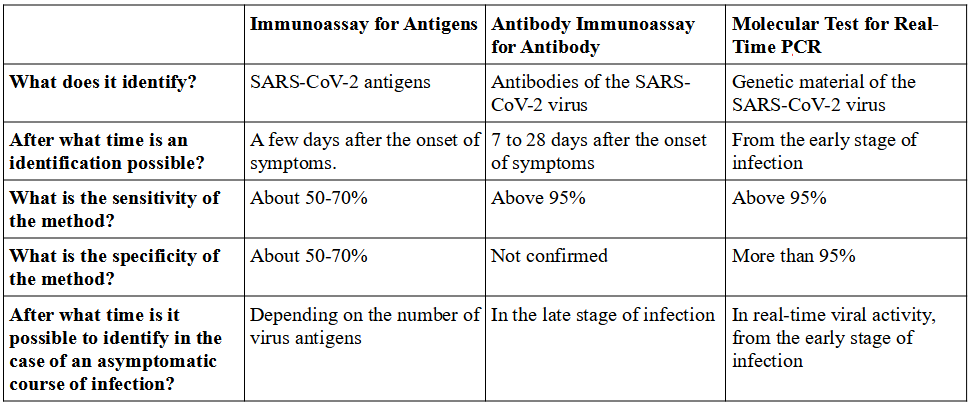In the previous article, we mentioned the most important aspects of coronavirus infection. This time we will try to describe a few technical aspects of the diagnostic test performed in the genXone laboratory. Which coronavirus identification test gives the most certainty for diagnosis? Why are molecular pathogen detection methods especially recommended? To find out about these answers, read on.
Taxonomy and characteristics of coronaviruses
Viruses are classified according to the general principles of biological systematics. For the COVID-19 coronavirus, this taxonomy is as follows:
Kingdom: Viruses
Government: Nidovirales
Family: Coronaviridae
Genus: Betacoronavirus
Subgenus: Sarbecovirus
Species: Coronavirus associated with severe acute respiratory syndrome
Strain: SARS-CoV-2
SARS-CoV-2 belongs to the single-stranded RNA viruses. Their genetic material is made up of a single strand of RNA with a positive polarity (+)ssRNA. The image obtained with the use of electron microscopy showed that the virus particles are almost circular in shape, and that on their surface are the proteins forming the wreath – the crown, which gave them their name. The size of the coronavirus genome has been estimated at around 30,000 nucleotides. Its genome size makes it one of the largest RNA viruses. In the coronavirus genome, genes encoding structural proteins responsible mainly for the formation of its molecules and interaction with receptors on the surface of host cells, as well as non-structural proteins necessary for viral multiplication (replication), as well as auxiliary proteins have been identified.
In the diagnosis of SARS-CoV-2, it has been recommended to identify at least two, and preferably three, of these genes: gene E and gene RdRP, which were indicated by the German research center German Center for Infection Research (DZIF), and also recommended by the US government agency United US Centers for Disease Control and Prevention and the Chinese organization Chinese Center for Disease Control and Prevention – gen N.
That is why genXone in its laboratory uses a test that allows the simultaneous identification of all three recommended genes from the SARS-CoV-2 coronavirus genome.
Coronavirus identification
Currently, there are two categories of methods for diagnosing SARS-CoV-2 infection. The first of these are serological tests to detect antigens or antibodies of the virus. However, the World Health Organization (WHO) unequivocally recommends the latter category, i.e. diagnostics involving molecular tests that directly identify the presence of the genetic material (RNA) of the SARS-CoV-2 virus, using the real-time PCR method. Why? The answer to this question is best presented in the table below:

Source: http://www.seegene.com/covid19_detection
The table clearly shows that molecular methods make it possible to make the most reliable diagnosis in the fastest time after infection. Their sensitivity and specificity are close to 100%. An additional advantage of the genetic test is the possibility of assessing whether the virus remains active in the body of a previously diagnosed positive person and whether this person may still be a potential source of infection to others.